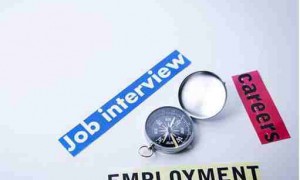Congratulations – you have made it past the résumé review and have been selected for an interview. Before you take that call or go to the in-person meeting, remember to do these five things.
恭喜你——你已经通过简历筛选并收到面试通知了。在你接到电话面试或去现场面试前,要记得做下面5件事。
1. Review what you have sent so far. Retrieve the exact résumé and cover letter that you submitted for the position. many job seekers customize their résumé and cover letter for each position, so reviewing your documents ensures you know what the interviewer saw before selecting you. Be prepared to discuss anything listed on your cover letter or résumé. You also want to make several copies of that same résumé to bring with you to an in-person meeting.
1. 整理你发给公司的材料。看一下你为这个职位写的简历和求职信。许多求职者为职位量身打造简历和求职信,所以要看下文档以确保你知道面试官是根据什么选你的。准备好回答任何求职信或简历上的内容。现场面试的话你还要多带几份简历。
2. Compare the job description to your résumé. First, highlight the top three to five requirements of the role. Next, set up a “side by side” comparison of what the role requires and how your background lines up. Third, write out examples that succinctly demonstrate that you possess the desired skills/traits. Fourth, practice saying those examples in front of a mirror OUT LOUD. It may seem awkward, but the interviewer can only judge what you say and how you say it, not what is in your head. Practicing in front of a mirror ensures that the words flow well and that you look comfortable while saying them.
2. 比较职位描述和简历内容。首先,找出3到5条重要的职位要求。接下来,挨个比较每条要求和你的条件是否相符。第三,简洁写出能证明你有公司所需技能/特点的例子。第四,在镜子前练习大声说这些例子。虽然有些尴尬,但面试官只能根据你说的内容和表达方式作判断,而不是根据你脑子里想的东西。在镜子前练习能确保说起来流畅而且看起来真诚。

3. Research the latest news/events at the company. Using linkedIn, the corporate website, Twitter, Facebook and Pinterest, read any current company updates. Pay close attention to items that may impact your targeted role. For example, if you notice several recent changes in the company’s management team, note if any of those managers had oversight of your potential department. Was a replacement hired? What was this person’s previous work experience? Listing all of this is a great way to cement the events in your memory and to better organize the information in a useful way.
3. 找公司最新消息/事件。用linkedIn、公司网站、Twitter、Facebook和Pinterest搜索,看公司发表的所有内容。密切关注可能会影响你的目标职位的事件。例如,如果你看到最近公司管理层有变动,而且新经理是管你将来的部门的话就要注意了。他是代替原来的经理吗?这个人之前的工作经历是怎样的?列出这些分析是记牢事情以及更好组织信息的好办法。
4. Turn the research into questions. People are frequently hired based on their questions more than their answers. The reason for this is that well-thought-out questions display research, deeper understanding of the position/company/industry and effort beyond the average job seeker. Using the information gained during the research process, create questions that show your knowledge and interest. If you can find the answer to your question on the company website, that is a clear sign that you should not ask it during the interview.
4. 把调查结论提炼成向面试官提的问题。人们被录用通常是基于他们问了什么而不是答了什么。因为仔细考虑过的提问可以体现出求职者事先了解过公司,和一般求职者相比对职位/公司/行业也有更深了解。利用调查中获得的信息,提些能体现学识和兴趣的问题。如果你能在公司官网上找到问题的答案,明显是告诉你在面试时不要问这种问题。
5. Practice the messy stuff. Review your résumé and determine how you will describe any weak spots or areas of uncertainty. The interviewer only knows what you have submitted in writing before the interview. When a job seeker seems uncertain or rambles when asked a question, it is a sign to an interviewer that this is an area that may need to be discussed in more depth to gain clarity. If you are clear in your presentation, you are less likely to send a red flag that triggers more probing. A confident delivery puts an interviewer at ease.
5. 多练没把握的内容。重看简历并想好怎么讲弱点或不确定的东西。面试前面试官只了解你以书面形式提交的信息。当面试官的提问让求职者看起来不确定或犹豫时,他们会觉得这块内容应该问得多些或清楚些。如果你清楚自己要讲什么,就不太可能有不知所措的时候。自信的仪态能让面试官面得更轻松。







